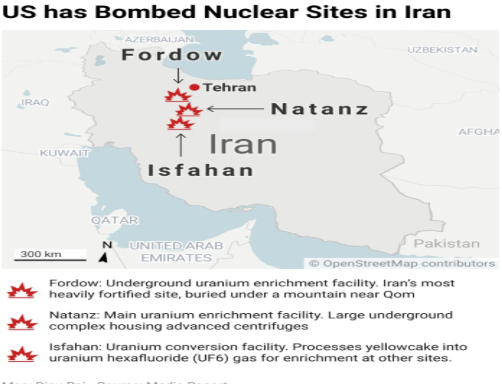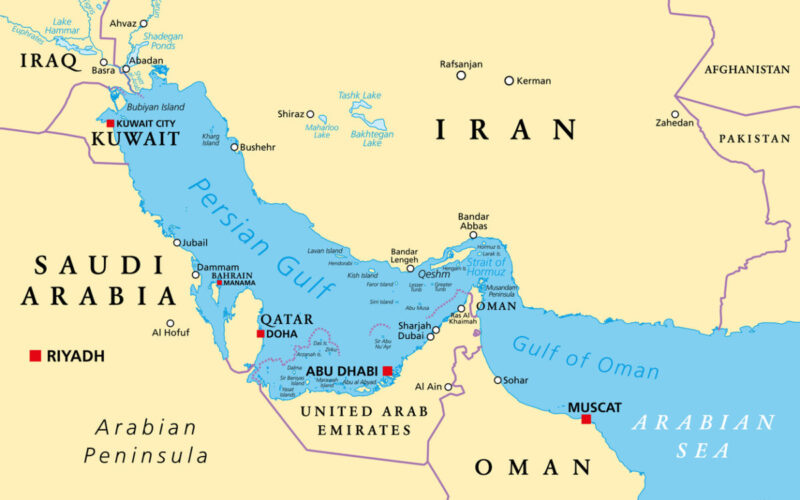Dr. Syama Prasad Mukherjee
Syllabhus: GS1/History
In News
- Prime Minister Narendra Modi paid tributes to Bharatiya Jana Sangh’s founding president Syama Prasad Mukherjee on his death anniversary.
Dr. Syama Prasad Mukherjee
- He was born on 6th July 1901 in Calcutta.
- He was a multifaceted personality -patriot, educationist, parliamentarian, statesman, and humanitarian.
- He inherited a legacy of erudition and nationalism from his father, Sir Ashutosh Mukherjee, an esteemed Vice-Chancellor of Calcutta University and Judge of the Calcutta High Court.
Major Contributions
- He excelled academically and served as the youngest Vice-Chancellor of Calcutta University, promoting Indian languages and education.
- He was initially involved with Congress and later joined the Hindu Mahasabha, becoming its acting president and advocating for complete Indian independence.
- As Finance Minister in Bengal, he opposed colonial interference and contributed to famine relief efforts.
- Post-independence, he served as Industry Minister, helping establish key industrial institutions before founding the Bharatiya Jan Sangh in 1951.
- He was Known as “The Lion of Parliament,” he was a powerful orator championing national unity, especially the integration of Jammu and Kashmir.
Legacy
- He died in detention in Kashmir in 1953 and is remembered for his patriotism, leadership, and dedication to India’s unity.
Source :PIB
UMEED Portal
Syllabus: GS2/ Governance
Context
- The Minority Affairs Ministry actively engages with States and Union Territories to ensure effective implementation of the UMEED portal, ensuring all Waqf properties are uploaded within six months.
About UMEED Portal
- The portal is developed by the Ministry of Minority Affairs to manage Waqf properties efficiently across India.
- The UMEED Central Portal, short for Unified Waqf Management, Empowerment, Efficiency and Development Act, 1995 will serve as a centralized digital platform for real-time uploading, verification, and monitoring of Waqf properties.
- Key Features of the Portal are:
- Creation of a digital inventory with geo-tagging of all Waqf properties
- Online grievance redressal system for better responsiveness
- Transparent leasing and usage tracking
- Integration with GIS mapping and other e-Governance tools
- Public access to verified records and reports.
Source: PIB
US Attack on Iran’s Nuclear Facilities
Syllabus: GS2/ International relations
Context
- The United States attacked three key nuclear installations in Iran—Natanz, Fordow, and Isfahan.
Background
- The strikes, known as Operation Midnight Hammer, mark the first direct U.S. military intervention targeting Iran’s nuclear infrastructure amid its war with Israel.
- The operation was coordinated with Israeli forces.

Other Nuclear Sites (Not Targeted)
- Bushehr Nuclear Power Plant: Commercial site, Russian-fueled, under IAEA monitoring.
- Arak Heavy Water Reactor: Potential for plutonium production; reconfigured under JCPOA.
- Tehran Research Reactor: Retrofitted for low-enriched uranium use.
| Joint Comprehensive Plan of Action (JCPOA) – JCPOA, commonly known as the Iran nuclear deal, is a landmark diplomatic agreement reached in 2015 between Iran and the P5+1 countries — United States, United Kingdom, France, Russia, China, and Germany, along with the European Union. – To ensure that Iran’s nuclear program remains peaceful and to prevent Iran from developing nuclear weapons, in exchange for lifting economic sanctions. – However In 2018, the U.S. under President Donald Trump unilaterally withdrew from the JCPOA. Main Provisions of the JCPOA – Uranium Enrichment Limits: Iran agreed to cap uranium enrichment at 3.67% purity (far below the 90% needed for weapons). 1. It could only keep 300 kg of low-enriched uranium, down from over 10,000 kg. – Centrifuge Reduction: Iran agreed to reduce its number of centrifuges from about 20,000 to 6,104, of which only 5,060 could be used for enrichment. – About Fordow: No uranium enrichment for 15 years. 1. Natanz: The only site allowed to enrich uranium under strict monitoring. – Heavy Water Reactor at Arak: Iran had to redesign and rebuild the reactor to prevent plutonium production. – Iran agreed to allow IAEA inspectors regular and long-term access to its nuclear facilities, including undeclared sites. – Sanctions Relief: In exchange, UN, U.S., and EU nuclear-related sanctions were lifted, giving Iran access to global markets and frozen assets. |
Source: IT
Iran Moves to Block Strait of Hormuz
Syllabus: GS2/ IR
In News
- Iran’s Parliament has approved a proposal to close the Strait of Hormuz due to U.S. strikes on Iranian nuclear facilities, escalating the Iran-Israel conflict.
About Strait of Hormuz
- The Strait of Hormuz connects the Persian Gulf to the Gulf of Oman and the Arabian Sea.

- It is located between Oman and Iran.
- It provides the only sea passage from the Persian Gulf to the open ocean and is one of the world’s most strategically important choke points.
- It serves as the primary export route for Gulf producers such as Saudi Arabia, the United Arab Emirates, Iraq, and Kuwait.
- It handles about 20 million barrels of oil daily—around one-fifth of global supply—and significant LNG volumes.
- In 2024–25, it accounted for over a quarter of global seaborne oil trade, making it vital to global energy security.
Impacts of Closure
- Saudi Arabia and the UAE have limited overland pipeline alternatives to the Strait of Hormuz, covering less than half its capacity.
- Any closure of the Strait would disrupt global supply chains and increase shipping and insurance costs.
- India imports 90% of its crude oil, with around 2 million barrels per day passing through the Strait of Hormuz.
- However, India’s diversified oil sources, with Russian crude now making up 38% of imports.
- A prolonged crisis could weaken growth, raise inflation, pressure the rupee, and strain fiscal space.
Source: BS
Sariska Tiger Reserve
Syllabus: GS3/Environment
Context
- A plan drawn up to rationalise the boundary of Sariska Tiger Reserve’s Critical Tiger Habitat (CTH) may offer a lifeline to over 50 marble and dolomite mines that were closed following a Supreme Court order.
- If approved, the new boundaries would exclude degraded peripheral areas, moving mining operations outside the prohibited one-kilometre zone.
About
- Sariska Tiger Reserve or Sariska National Park is one of the biggest and most renowned Tiger reserves in Northern India.
- The park is located in the Alwar district of Rajasthan.
- Sariska Tiger reserve used to be the hunting ground for the princely state of Alwar. But after Independence, The Sariska Forest was first notified as a Wildlife Reserve in 1955.
- 1978: It was declared as the 11th Tiger Reserve by the Government of India.
- 1982: The Sariska Wildlife Sanctuary was designated as Sariska National Park.
Source: IE
GBU-57 Massive Ordnance Penetrator/MOP
Syllabus: GS3/Defence
Context
- The American military has completed airstrikes on three sites in Iran, marking a significant escalation in the ongoing conflict with Israel.
- Located 300 feet beneath a mountain, Fordo is where Iran has allegedly tried to enrich uranium for weapons purposes and stockpile the enriched uranium.
About
- The GBU-57 Massive Ordnance Penetrator is the largest non-nuclear bomb in the US inventory.

- Built by Boeing and guided by GPS, it is engineered specifically to target deeply buried and hardened bunkers.
- MOP measures 20.5 feet in length and 31.5 inches in diameter, and weighs just under 30,000 pounds—including 5,300 pounds of high-explosive material.
- The bomb can burrow more than 200 feet through reinforced concrete before detonating. Its casing, made from high-performance steel alloy, helps it withstand the immense impact forces upon penetration.
- Any country other than the US, does not have any non-nuclear weapon systems that can penetrate a site as deep as Fordo.
Source: IE
INS Nilgiri: First Project 17A Stealth Frigate
Syllabus :GS3/Defence
Context
- INS Nilgiri arrived at Visakhapatnam port to join the Eastern Naval Command’s Sunrise Fleet.
| Do you know? The other six ships of this class — Himgiri, Taragiri, Udaygiri, Dunagiri, and Vindhyagiri — are at various stages of construction at MDL, Mumbai, and GRSE, Kolkata. |
INS Nilgiri
- It is built by Mazagon Dock Shipbuilders Limited (MDL), Mumbai, and Garden Reach Shipbuilders and Engineers (GRSE), Kolkata as a follow-on to the Shivalik class.
- It is the first indigenously built Project 17A stealth frigate.
- Project 17A Frigates are the follow-on class of Project 17 (Shivalik Class) Frigates, with improved stealth features, advanced weapons and sensors and platform management systems.
- It is the first indigenously built Project 17A stealth frigate.
- It is designed for blue-water operations and is equipped for anti-air, anti-surface, and anti-submarine warfare.
- It is multi-mission ships which operate in deep seas and handle conventional and unconventional threats
Source :IE
INS Tamal
Syllabus: GS3/Defence
Context
- The Indian Navy is all set to commission its latest stealth multi-role frigate INS Tamal at Kaliningrad in Russia.
About
- This will be the last warship of the Indian Navy to have been built outside India and the eighth in the series of Krivak class frigates inducted from Russia over the past two decades.
- INS Tamal is the second ship of the Tushil Class, which are the upgraded versions of their predecessors, Talwar and Teg classes.
- By the conclusion of this series of ships, the Indian Navy will be operating 10 ships with similar capabilities over four different classes.
INS Tamal
- The ship has 26% indigenous components, including the BrahMos long range cruise missile for targeting both at sea and land.
- The vessel has significant upgrades in its arsenal in comparison to its predecessors.
- The ship’s new design provides it with enhanced stealth features and greater stability characteristics.
Source: TH
Previous article
Quantum Communication
Next article
Child Labour Rescues in 2024–25: C-LAB